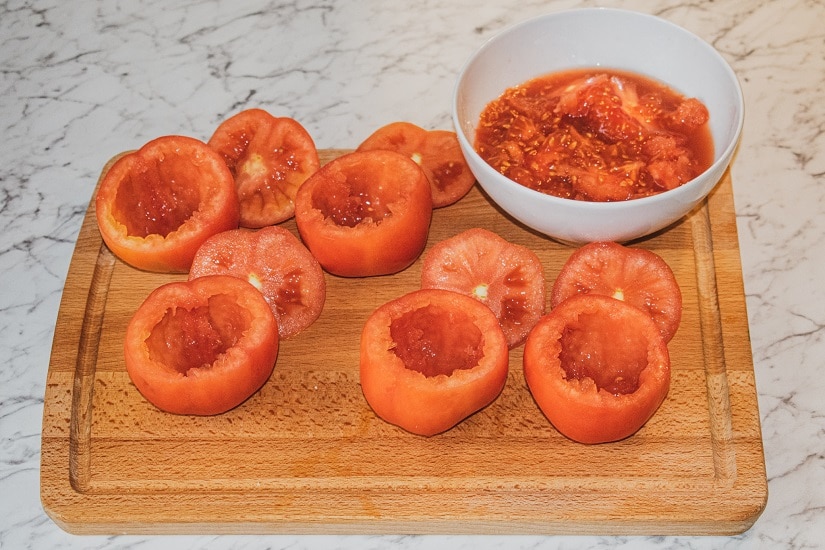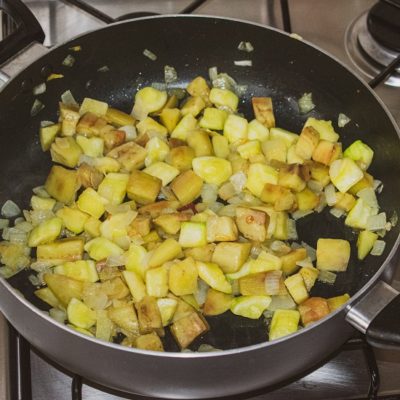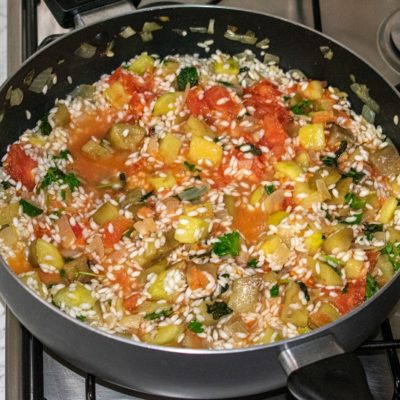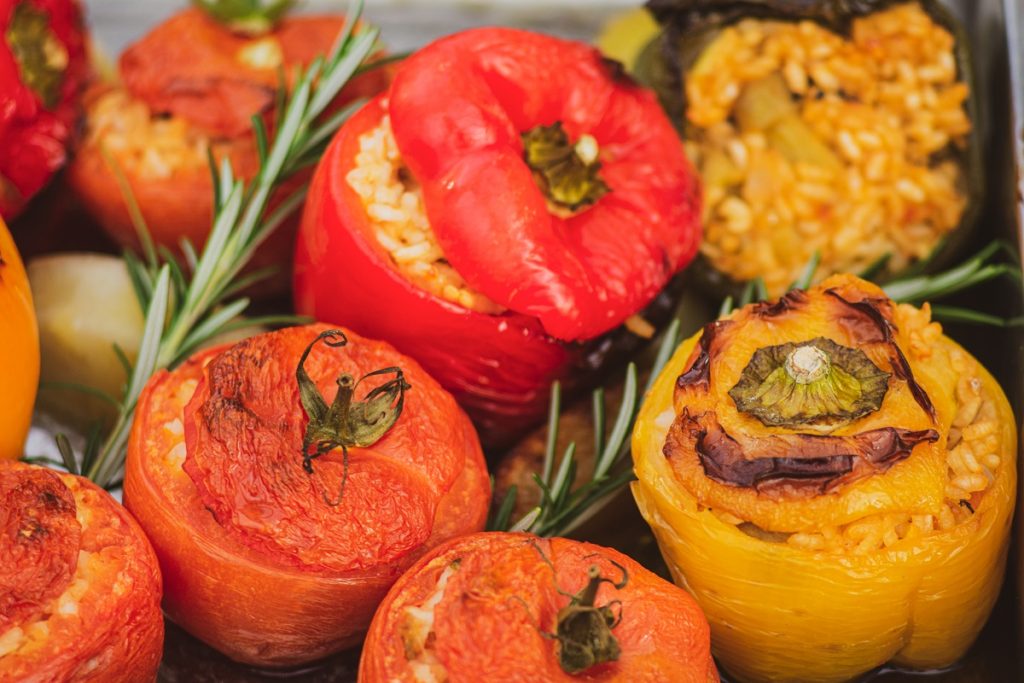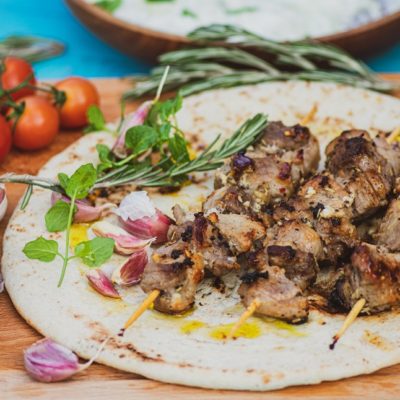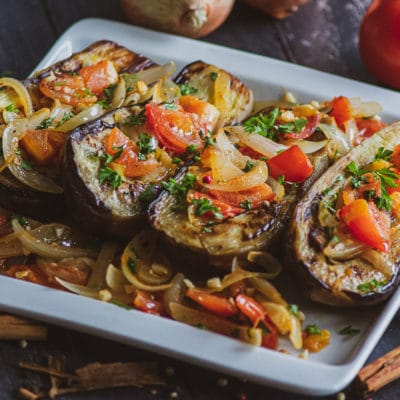Ingredients
-
4 pcs tomatoes
-
4 pcs bell pepper
-
1 pcs onion peeled roughly chopped
-
1 pcs aubergine peeled and chopped
-
1 pcs zucchini peeled and chopped
-
250 g Potatoes peeled and diced
-
250 g rice Baldo or Arborio
-
1 tablespoon Tomato puree
-
4 pcs garlic cloves finely chopped
-
2 tablespoons fresh mint chopped
-
2 tablespoons fresh parsley chopped
-
300 ml Olive oil
-
1 tablespoon Salt
-
a pinch Black pepper
Directions
Gemista or yemista is a well-known dish in traditional Greek cuisine. This is a very popular dish, traditionally prepared in the summer, since it is made using a variety of vegetables. In Greek cuisine, it belongs to a group of dishes known as Ladera (Lada meaning olive oil in Greek). Unsurprisingly, it is made with a lot of olive oil.
Gemista is peppers and tomatoes stuffed with rice, vegetables and herbs and baked in the oven. As with many other traditional dishes, this has countless variations. Almost every family in Greece has its own special recipe. Sometimes instead of tomatoes and peppers, you can find stuffed onions or aubergines. Likewise, the vegetables used for stuffing vary and often depend on the region in which Gemista is made. For example, pine nuts and raisins are added in the Mediterranean part of Greece, while minced beef or pork is much more common in the North of the country.
Gemista Origin
The name Gemista comes from the verb ‘gemizo/yemizo’ (‘γεμίζω’) which means filled or stuffed with. It is assumed that Gemista became popular in Greece after WW1, when it was introduced by the Greeks who escaped from Turkey after the Greek-Turkish War. In Turkish cuisine, stuffed dishes such as sarma and dolma are very common.
However, stuffed peppers are also popular in many other cuisines around the world. We have already mentioned Turkish dolmas, but stuffed peppers can also be found in Iranian cuisine, where they are called Dolmeh Felfel. They are also found in the cuisines of Central Asia and the Middle East, and all the way to India. There you can try a variety of different stuffed peppers called Bharwan Mirch.
Peppers prepared similarly to Gemista are popular in European cuisines as well. Similar dishes can be found in Balkan cuisine (Punjena or filovana paprika), Bulgarian (Pulneni chushki), Romanian (Ardei umpluți, Albanian (Speca të mbushur), Polish (Faszerowana papryka), Macedonian (Polneti Piperki), Czech (Plněná paprika), Slovak (Plnená Paprika), Hungarian (Töltött paprika) and German (Gefüllte Paprika).
Stuffed peppers are also popular in northern Europe, throughout Scandinavian and Baltic cuisines. They can be also found in Spanish and Italian cuisines.
The dish is also popular across North America, especially in Mexico, where popular examples include jalapeno poppers and Chile Relleno.
I got this recipe for Gemista from a local lady when I visited Thessaloniki a few years ago.
Steps
|
1
Done
|
First, wash the tomatoes and cut the top (as shown). Set the tops aside and keep them for later. Using a small spoon remove the tomato flesh and keep it for later. When cleaning the tomatoes, make sure that the outer edge is 7-8 mm thick and the skin is not damaged. Turn the tomatoes upside down and let them dry. |
|
2
Done
|
|
|
3
Done
|
Heat the olive oil in a pan and sauté the onions for a few minutes. Add the finely chopped aubergine and zucchini and sauté everything together for 5-6 minutes. Add the rice, pour in a little water and sauté for 10 minutes until the rice is half cooked. Finally, add the tomato flesh, fresh mint, parsley, garlic and tomato puree. Add a tablespoon of sugar and season with salt and pepper to taste. Mix well and set aside. |
|
4
Done
|
Peel the potatoes and cut them into wedges. |
|
5
Done
|
|
|
6
Done
|
Put the stuffed vegetables in a baking tray and place the potato wedges in between. |
|
7
Done
|
|
|
8
Done
|
Gemista can be served hot or cold and taste great with feta cheese and pita bread. |




